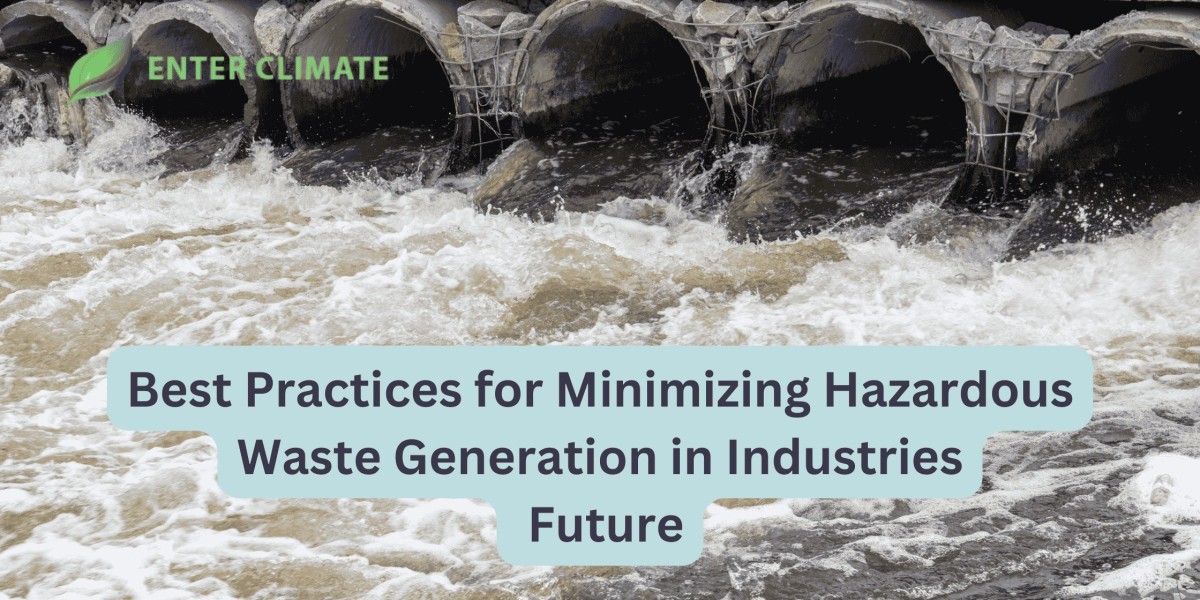Industries are at the heart of economic growth, but they also face increasing pressure to reduce their environmental footprint. One of the most significant challenges is managing hazardous waste, which can pose serious risks to both the environment and public health if not handled correctly. In India, where industrial activities are expanding rapidly, proper waste management is becoming more crucial than ever.
The generation of hazardous waste is a growing concern, especially with the rise in manufacturing, chemical processes, and urbanization. With hazardous materials such as chemicals, solvents, and heavy metals, it is vital for industries to implement efficient strategies that reduce waste and prevent environmental contamination.
Adopting effective hazardous waste management services and best practices not only helps industries stay compliant with regulations but also promotes sustainability and environmental stewardship. In this blog, we’ll explore key strategies for minimizing hazardous waste generation in industrial operations and how businesses can contribute to a cleaner, greener future.
What Is Hazardous Waste and Why Is It a Concern?
Hazardous waste includes materials that are toxic, flammable, corrosive, or reactive. These can be byproducts from industrial processes, chemical manufacturing, or even waste from everyday operations like packaging and cleaning. When not managed properly, hazardous waste can contaminate water, soil, and air, leading to long-term health issues for humans and wildlife alike.
In India, hazardous waste generation has risen sharply due to industrial growth, making it imperative for businesses to adopt proper waste management techniques. Not only does improper waste disposal lead to environmental degradation, but it can also result in severe penalties and damage to a company's reputation.
Best Practices for Minimizing Hazardous Waste Generation
- Implement Waste Minimization Programs
The first step in managing hazardous waste is to reduce its generation. Industries should implement waste minimization programs that focus on using fewer toxic materials, optimizing processes, and reducing inefficiencies. For instance, substituting hazardous chemicals with safer alternatives or reducing the quantities of raw materials used can significantly decrease waste production.
- Substitute hazardous chemicals: Switching to non-toxic or less harmful chemicals can significantly reduce the amount of hazardous waste produced.
- Reduce raw material use: By optimizing the use of raw materials and improving inventory management, businesses can cut down on waste generation.
By focusing on waste reduction, industries not only minimize hazardous waste but also improve their overall operational efficiency.
- Adopt Cleaner Production Technologies
Cleaner production involves using innovative technologies and processes that minimize waste generation at the source. Industries should invest in cleaner technologies that reduce the need for hazardous substances or minimize waste output. For example, modern filtration systems can reduce the need for hazardous solvents, and energy-efficient machinery can reduce byproducts.
Cleaner production is a proactive approach that can significantly cut down on the volume of waste generated, thus preventing potential environmental hazards.
- Regular Monitoring and Auditing
Regular waste audits and monitoring of industrial processes can help identify areas where hazardous waste generation can be reduced. By analyzing production lines and waste disposal methods, industries can pinpoint inefficiencies and implement corrective measures. A comprehensive audit will also ensure that waste disposal is done in compliance with local regulations and environmental standards.
Hazardous waste management services can assist businesses in conducting thorough audits and ensuring compliance with local waste disposal regulations. By staying on top of waste management practices, industries can avoid penalties and minimize their environmental footprint.
- Proper Segregation and Storage of Waste
Segregating hazardous waste at the point of generation is a critical practice in managing it effectively. Industries should set up clear systems to separate hazardous waste from non-hazardous waste. This will make it easier to handle, recycle, or dispose of the waste in an environmentally friendly manner.
Proper storage is also key. Hazardous waste should be stored in clearly marked containers with appropriate labeling, ensuring that the materials are safely contained until they can be safely disposed of or recycled. This reduces the risk of contamination and accidents at the workplace.
- Enhance Employee Training and Awareness
One of the most important steps in minimizing hazardous waste is educating the workforce. Employees should be trained on the importance of hazardous waste management, safe handling practices, and the proper segregation and disposal of waste materials. By creating a culture of responsibility and awareness, industries can ensure that everyone is invested in reducing waste generation.
Training should also cover emergency response procedures in case of hazardous material spills or accidents, ensuring that staff are prepared to act swiftly and responsibly.
- Invest in Recycling and Reuse
Industries should focus on recycling and reusing materials whenever possible. Some hazardous materials, like solvents, can be purified and reused, reducing the need to dispose of them as waste. Investing in recycling programs not only helps reduce hazardous waste but also conserves valuable resources and reduces the demand for raw materials.
By collaborating with professional hazardous waste management services, industries can find effective ways to recycle hazardous waste or repurpose materials into usable products, thus reducing the environmental burden.
- Follow Regulatory Guidelines and Adopt International Standards
In India, various environmental laws and regulations govern the management of hazardous waste, such as the Hazardous Waste Management Rules under the Environment Protection Act. Industries must stay informed about these regulations and ensure compliance to avoid legal complications.
Additionally, adopting international best practices such as ISO 14001 (Environmental Management) and ISO 45001 (Occupational Health and Safety) can further streamline waste management processes and ensure long-term sustainability.
Conclusion
Minimizing hazardous waste generation in industries is a crucial step toward environmental protection and sustainability. By adopting best practices such as waste reduction, cleaner production, employee training, and proper segregation, businesses can significantly lower their environmental impact. Additionally, partnering with professional hazardous waste management services ensures that waste is handled safely and in compliance with regulations.
In India, where industrialization is rapidly growing, it’s more important than ever for businesses to be proactive in managing their waste. Implementing these strategies not only protects the environment but also improves operational efficiency, reduces costs, and enhances a company’s reputation as a responsible business. Let’s all take the necessary steps to minimize hazardous waste and contribute to a cleaner, healthier planet.



